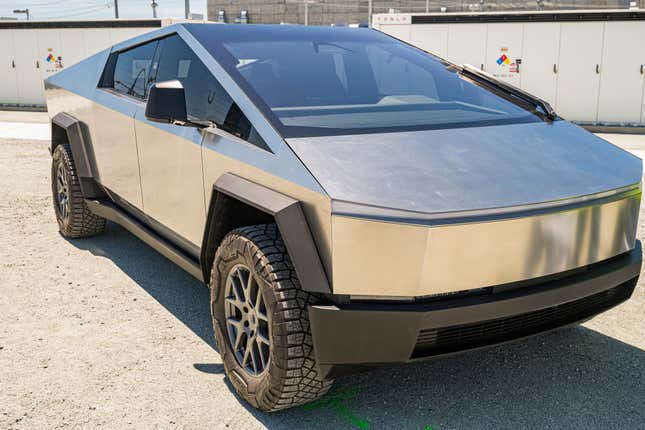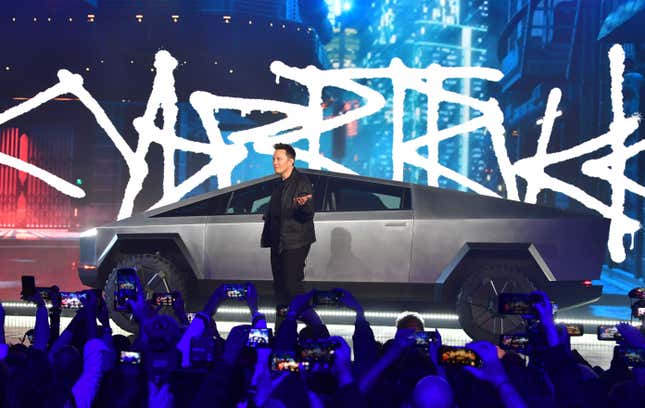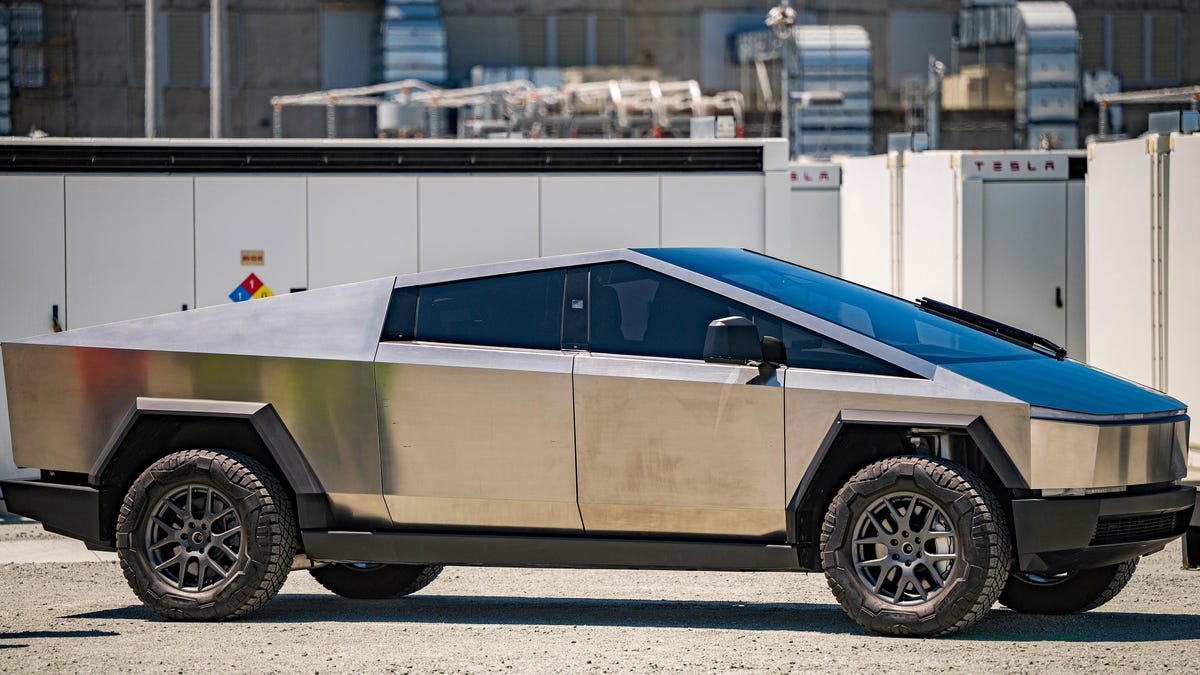The road to a production Cybertruck has been bumpy. Almost as bumpy and uneven as the first Cybertrucks coming out of the Austin Gigafactory, which have reportedly been so bad that they prompted Elon Musk to send an urgent email to Tesla employees. In the message, Musk demanded greater precision in the production process of the EV pickup, with Musk going on to reference the famously tight tolerances of Lego blocks and soda cans to inspire his workers to build better Cybertrucks.
But a better Cybertruck would only be possible through a complete redesign, according to Fast Company, which cites car designers such as the Autopian’s Adrian Clarke. The issues come down to the impossibly flat body panels of the Cybertruck, which Musk says will require building to “sub 10 micron accuracy” in order to look right. Given the design of the EV, small imperfections inherent in the production process are all the more clear, as Clarke tells Fast Company:
Professor X believes that Tesla can attain such precision, but Clarke questioned the demand in an email he sent me today. “Is totally infeasible for production. Body panel tolerances are measured in whole mm to allow for variance in assembly and the tolerance stack!” This is also nonsense because, as he points out, it doesn’t take into account the thermal expansion and contraction of vehicles that come into play during the manufacturing and operation of the vehicle.
Musk is aware of these issues, but he seems convinced that tighter tolerances will be the fix the Cybertruck needs. This ignores other practical problems that have led to multiple delays in bringing the EV to market. Per Fast Company:
Musk promised this pickup in 2021 and didn’t deliver. Then he said production was coming in 2022, but that year came, and it got delayed again to early 2023. Now it’s been delayed again till “late 2023.” Tesla blamed the supply chain, but Clarke and others in the industry are skeptical it will ever happen—at least, not without a serious redesign. “As soon as we saw [the Cybertruck], everyone I know in the industry started laughing. We just thought there is no way they’re gonna be able to get that into production.” There’s no way, he assures me, because it’s not going to pass crash regulations, it’s not going pass pedestrian impact regulations, and, more importantly, it’s going to be extremely hard to make those “those dead straight panels.”
Still, Musk is soldiering on with the Cybertruck despite its unprecedented design, which remains unprecedented for good reason: it makes production difficult and repairs nearly impossible. I suppose that’s OK since auto insurance companies are likely to call any crashed Tesla a total loss due to the expense of replacing its battery pack. Future owners beware: ding your Cybertruck and say goodbye forever.

I get the impulse to design something simple and clean. Really, I do. But there’s a difference between something minimalist and something reductive. The Cybertruck strikes me as an attempt at the former that went off the rails and arrived at the latter. A bad joke that started with Elon Musk or someone else at Tesla saying “what if we did this instead…” followed by uproarious laughter at crudely drawn lines and four circles. Behold, the Cybertruck, said some genius and no one dared to question the so-called Technoking.
The problem is that the bit went too far — all the way to the assembly line. That is, if the damned thing ever makes it to production. That’s still in question given the issues with making a vehicle based on the whims of a troll. So much of Elon Musk and his outlook just seems reactionary to me, like an attempt to elicit any response from someone… anyone. A cry in the recesses of cyberspace. Thus it is with the Cybertruck, which is the answer to a question no one asked. What if, indeed. What if we didn’t?


